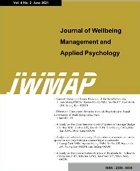- 권한신청
- E-ISSN2586-6036
- KCI
Analysis on an Oxidation-Reduction Reaction of Photocatalytic Plasma Complex Module
KWON, Woo-Taeg (Department of Environmental Health & Safety, Eulji University)
Abstract
Purpose: This study is about photocatalytic technology and plasma oxidation-reduction technology. To the main cause of exposure to odor pollution, two deodorization techniques were applied to develop a module with higher removal efficiency and ozone reduction effect. Research design, data and methodology: A composite module was constructed by arranging two types of dry deodorization equipment (catalyst, adsorbent) in one module. This method was designed to increase the responsiveness to the components of complex odors and the environment. standard, unity, two types of oxidizing photo-catalyst technology and plasma dry deodorization device installed in one module to increase the potential by reduction to 76% of ozone, 100%, and 82%. Results: The complex odor disposal efficiency was 92%. Ammonia was processed with 50% hydrogen sulfide and 100% hydrogen sulfide, and ozone was 0.01ppm, achieving a target value of 0.07ppm or less. The combined odor showed a disposal efficiency of 93%, ammonia was 82% and hydrogen sulfide was 100% processed, and ozone achieved a target value of 0.07 ppm or less. Conclusions: Ozone removal efficiency was 76% by increasing Oxidation-Reduction Reaction(ORR). The H2S removal efficiency of the deodorizer was higher than that of the biofilter system currently used in sewage disposal plants.
- keywords
- Complex odor, Ozon, Oxidation-Reduction reaction, Photocatalyst, Complex module device
- 다운로드 수
- 조회수
- 0KCI 피인용수
- 0WOS 피인용수














